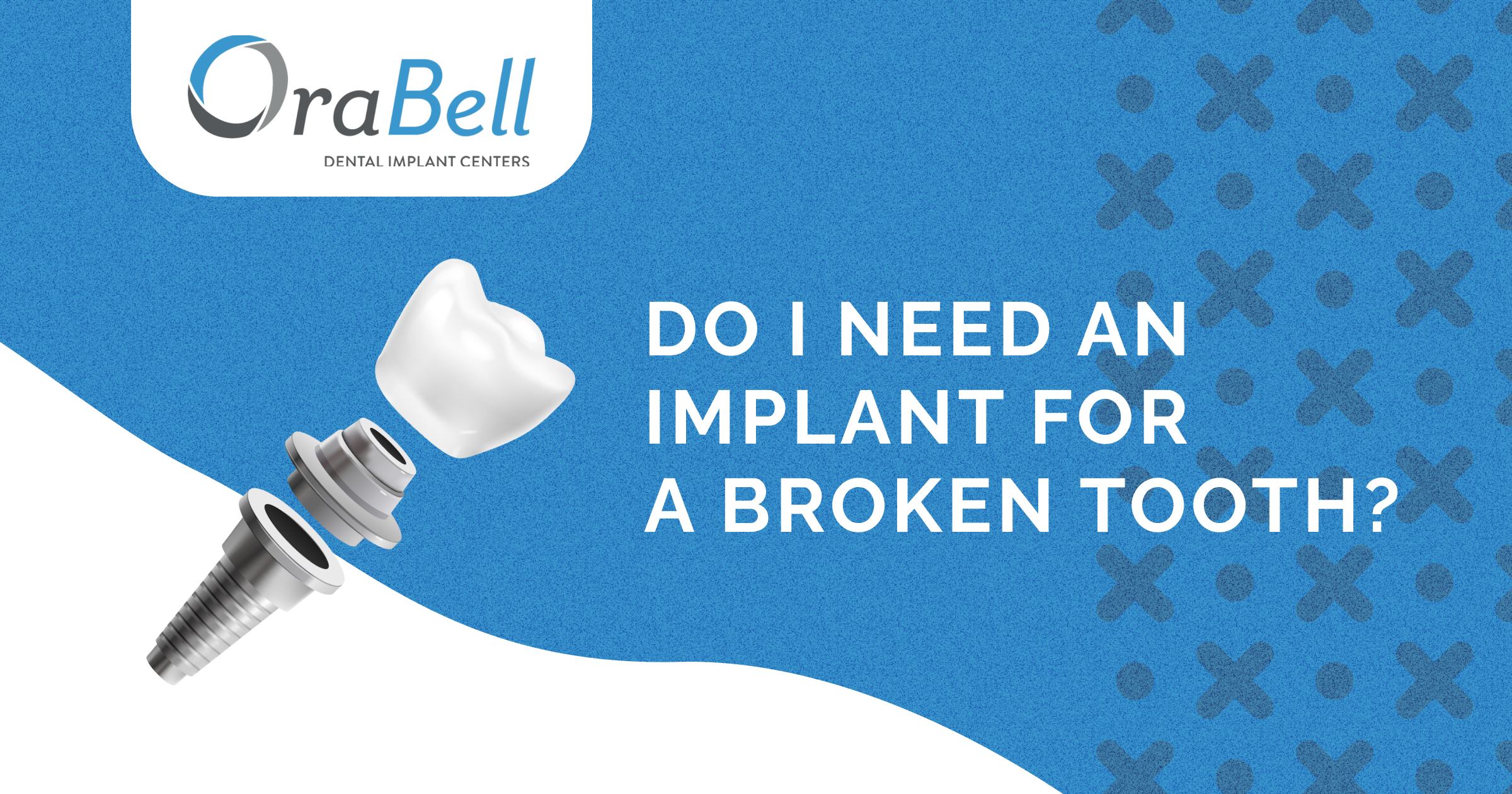
A dental implant is a fully functional replacement for a natural tooth. When you have a missing or broken tooth, there are several options to treat it, depending on the nature and severity of the problem. We’ll look at common issues and whether they warrant getting a surgical implant.
To start, let’s look at the anatomy of a tooth. Every tooth contains enamel, an outer layer that’s the hardest material in the body. Yet, it can break if you bite down hard or are injured. Below the enamel is the dentin. It can be painful if this inner part of the tooth is exposed. The pulp is even deeper, where there are nerves, while the root of the tooth is below the gum line and secures the tooth to the jawbone.
Types of Tooth Damage
A broken tooth doesn’t always require an implant. If a tooth is chipped or only slightly cracked, a dental filling can be used to repair it. Repairs to the front teeth can be made using bonding, or a tooth-colored composite resin.
If a larger section of a tooth has been damaged, a dental crown might be used. It requires a dentist to file down part of the tooth. This area is then covered with a tooth-shaped crown, which restores shape and function while preventing further damage. To address even more significant damage, a shell, or veneer, may be placed over the front of the tooth.
As a last resort, the damaged tooth will be extracted. This is more typically done when the tooth is severely decayed or infected.
When an Implant Is Needed
Minor cracks in the enamel, or craze lines, often don’t require any treatment. If the cusp or chewing surface is cracked, it can be treated without an implant if dealt with early. In more serious cases, a crack can run vertically from the enamel into the pulp; if it becomes exposed, pain, inflammation, or infection are possible. Sometimes a dentist can remove the pulp and seal the tooth via a root canal.
If you have a split tooth, there is no option to save it. It’s when a crack runs from the top of the tooth down to the root. Any tooth with a crack extending below the gum line is usually removed. A vertical root fracture, which begins at the root and works its way up, is also a reason for an implant. Such a fracture often remains undiscovered until the gum and bone become infected.
The dentist will remove the tooth and provide an implant. Once the post is inserted during surgery and you receive an abutment and prosthesis, the implant will function like your old tooth. Only routine daily brushing and flossing and regular dental visits/cleanings will be required to care for your implant.
Do I Need to Replace a Broken Tooth?
One or more broken teeth can cause a variety of problems. It can be difficult to eat or even close your mouth properly with a broken tooth. The pain can be severe as well. There’s also a risk of infection and additional damage to the tooth interior. The affected tooth can break further, become discolored, and even die. Broken teeth can also be quite unattractive.
A dental implant is a permanent solution to fixing a broken tooth. It can last the rest of your life and looks and feels as natural as a normal tooth. Not only does it provide comfort and function. It also helps maintain oral health, as it prevents other teeth from shifting and bone from breaking down.
Contact OraBell Dental Implant Centers
We use a state-of-the-art implant procedure to replace broken or missing teeth. Whether you need one broken tooth or multiple teeth replaced, we can help, as we specialize in single, multiple, and full sets of implants to restore chewing function, improve your appearance, and prevent bone loss. In the long run, dental implants are more convenient than dentures or bridges. Learn about our implant process and if you are a candidate for dental implants, and book your free consultation by calling 818-639-4926 today.
